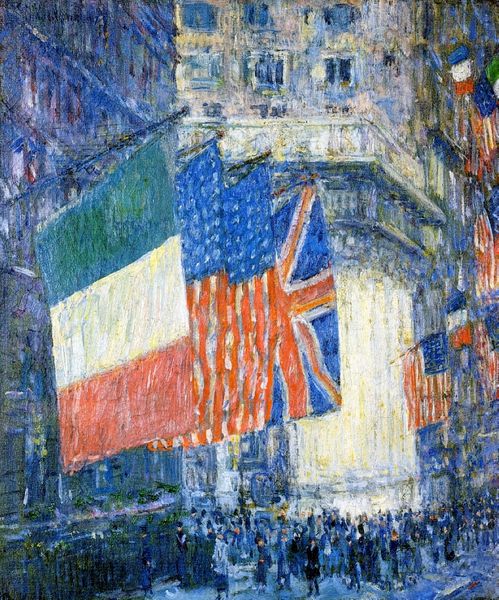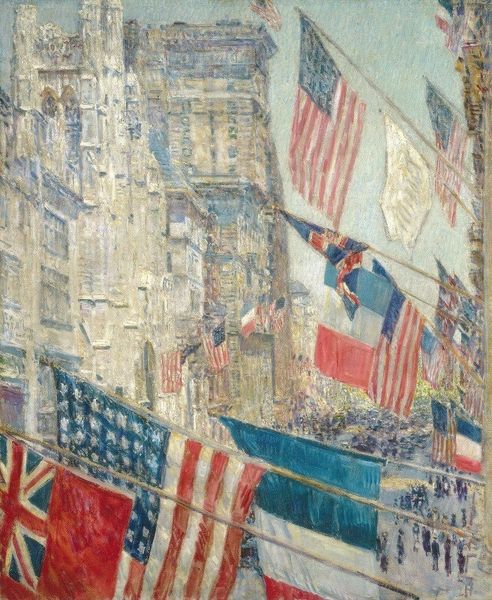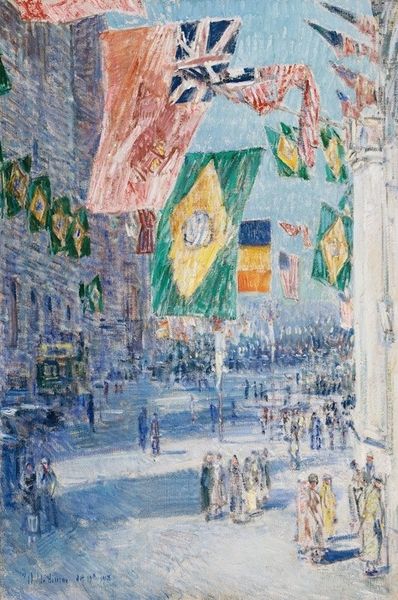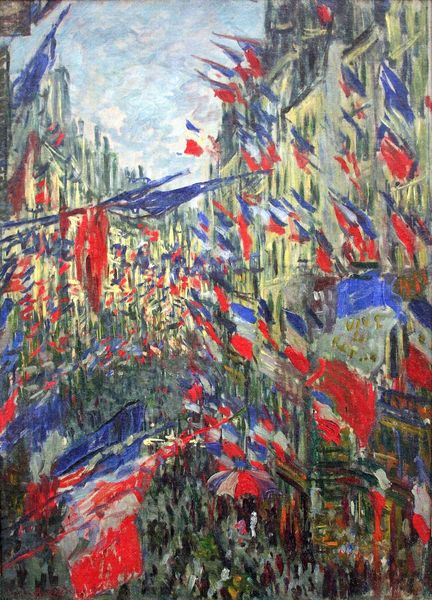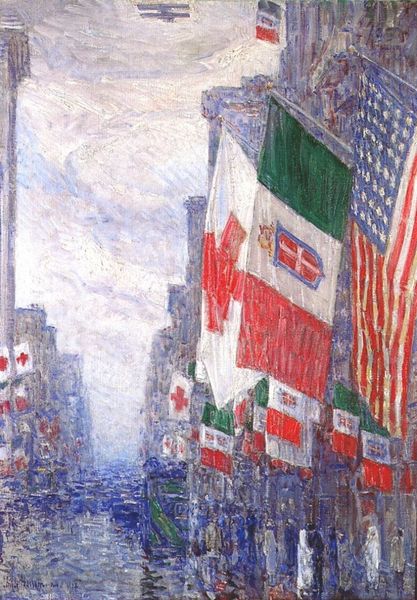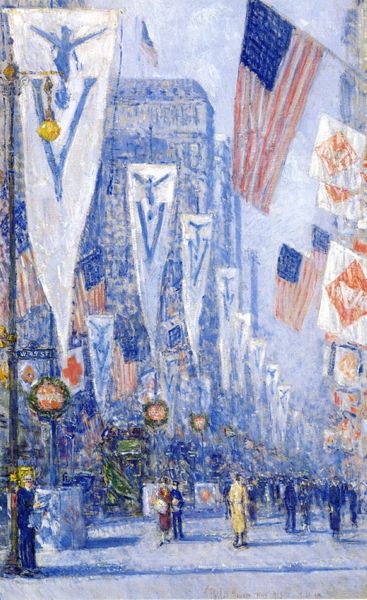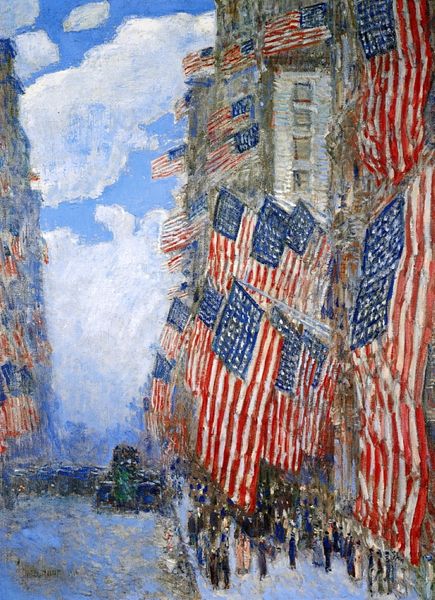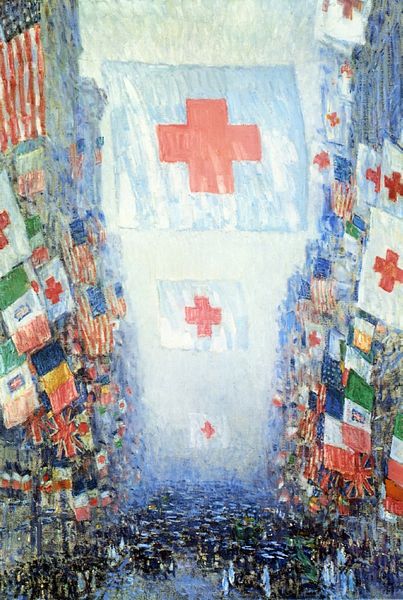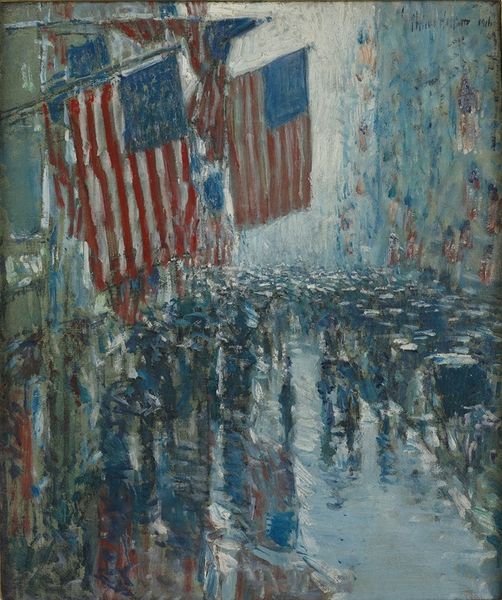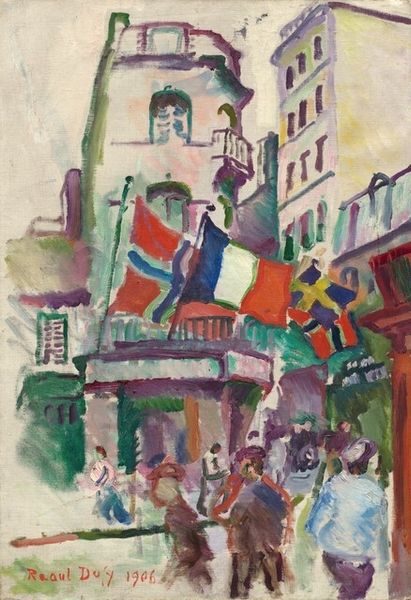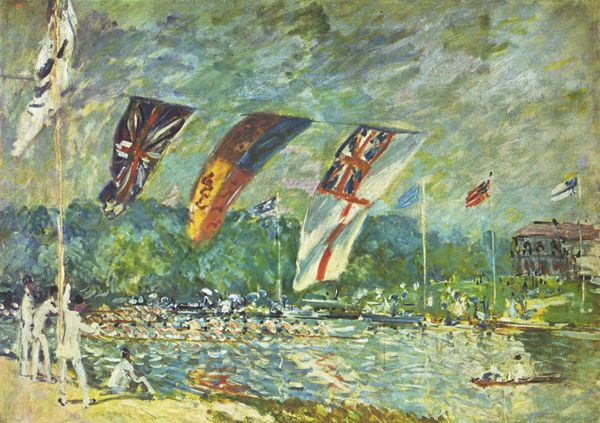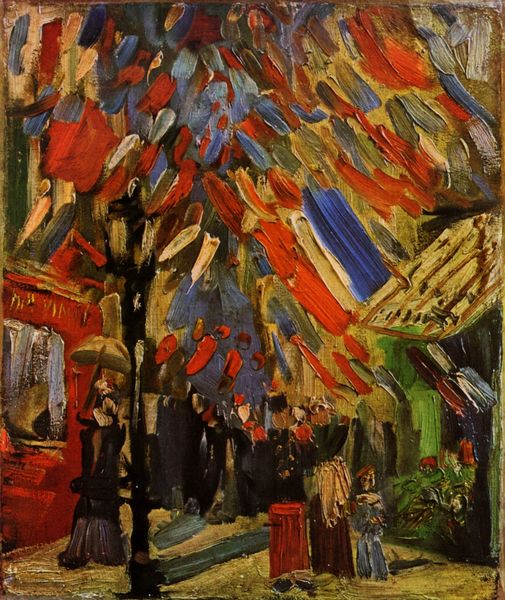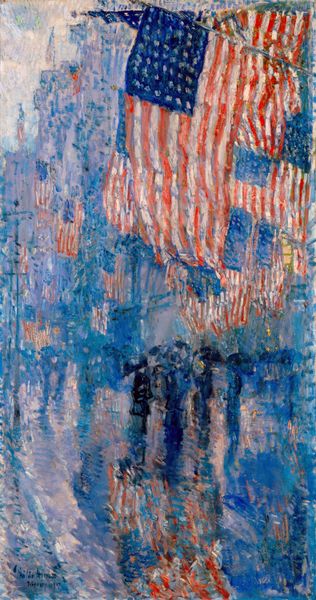
Copyright: Public domain
Editor: So, here we have Childe Hassam’s "Avenue of the Allies," painted in 1918 using oil on canvas. It feels very celebratory and…patriotic, I suppose, with all those flags. What do you see in this piece? Curator: Indeed! The flags aren’t merely decorative; they're potent symbols of the Allied nations during World War I. Consider what those colours, those patterns meant at the time: unity against a common enemy, a visual rallying cry. The flags, primarily the British and American flags, represent political, cultural, and military ideologies. Why do you think Hassam chose to feature the flags so prominently? Editor: Perhaps to show America's support and alliance with other nations during the war? It's interesting how he's almost abstracted them, though, into fields of colour. Curator: Exactly! He uses Impressionistic brushstrokes, softening the edges, suggesting movement and light. What do these blurred lines and movement convey to you, beyond mere representation? Editor: Hmm… maybe the constant change and turbulence of wartime, but also, like… hope? That even amidst chaos, there's a vibrant future? Curator: A beautiful interpretation! Each flag becomes an emblem loaded with social and emotional meaning and cultural aspiration. By massing these banners, Hassam's not only commemorating an alliance but also, perhaps unconsciously, hinting at the complicated intersection of patriotism and national identity, and collective hope in trying times. It's like he’s painted a memory, a collective aspiration. Editor: It definitely gives me a lot to think about—it's more than just a street scene; it's a captured moment of collective sentiment and visual memory. Curator: Precisely. And that, my friend, is the power of symbolism in art.
Comments
No comments
Be the first to comment and join the conversation on the ultimate creative platform.
